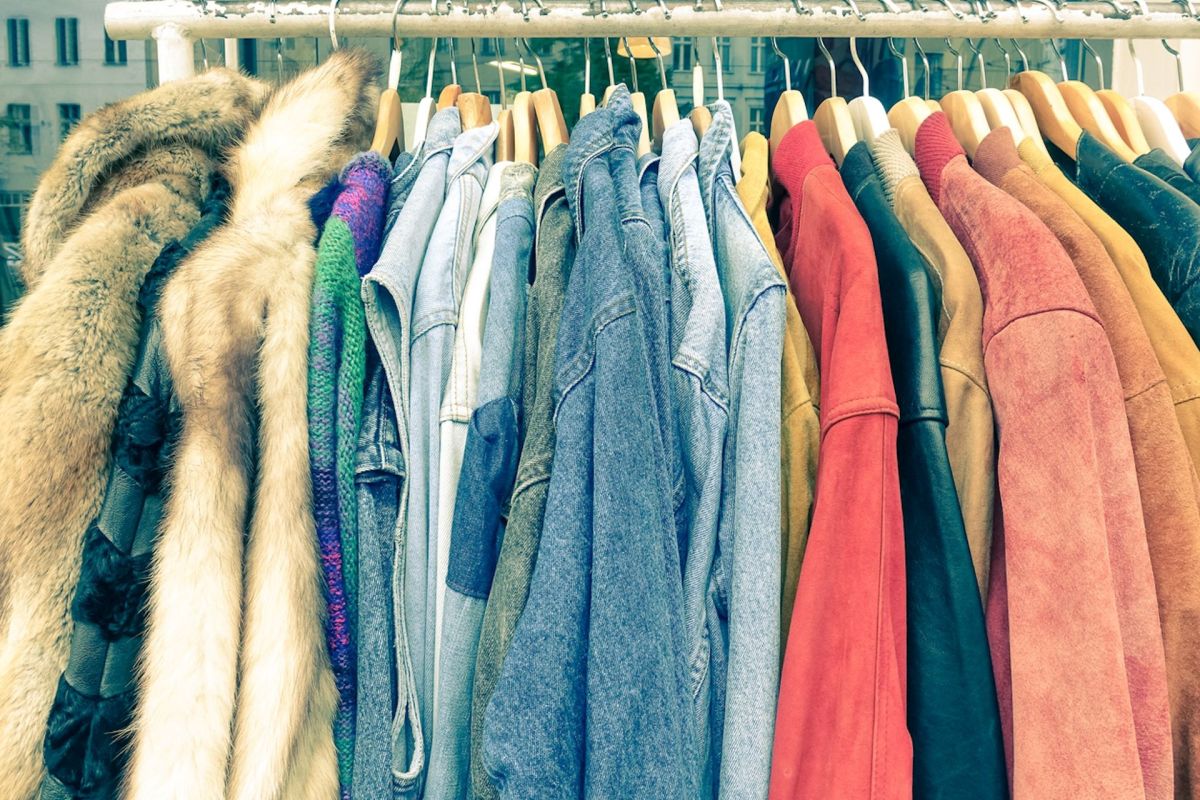Clothing is one of the major expenses most Americans have to budget for — and all those clothes become tons and tons of trash at the end of their lifespans.
If you're a little more mindful about the way you get your clothes, you can save a lot of money from leaving your wallet and a lot of trash from entering your local landfill. Plus, you can actually get higher-quality clothing this way while refusing to support the unethical treatment of garment workers in the modern fast-fashion industry.
Get new clothes sustainably
"Fast fashion" is the practice of pumping out a huge number of ever-changing clothing designs, each produced with cheap materials and underpaid, exploited labor. Whatever doesn't sell just gets dumped in a landfill, one of which is so large it's visible from space.
In a fast-fashion environment, buyers are pressured to break the bank, keeping up with lightning-fast shifts in trends.
Those who don't give in to that pressure are still forced to buy new clothing frequently as their low-quality clothes wear out. Famous companies like H&M, Zara, Forever 21, Uniqlo, and Shein are among the guilty.
You can sidestep the entire fast-fashion industry and avoid giving these companies a cent by buying your clothing secondhand. Thrifting can save you $75 a year or more since thrift stores sell clothing for about a third of the original price — some of which is new or close to it.
Every item you buy secondhand is one less piece going in the garbage, and many lucky shoppers have found hidden gems at thrift stores, including luxury brands, pocketfuls of cash, and showstopping outfits for special events.
If thrifting isn't for you, some brands have sworn off harmful fast-fashion practices and adopted an eco-friendly standard. Since these higher-quality clothes last longer, any extra money you spend is more than offset by future savings, netting you about $100 extra per year.
Every sturdy shirt, jacket, and pair of shoes you buy means you can skip multiple flimsy ones that would end up in the trash, so you'll reduce your waste by about 40 pounds a year, too.
A few sustainable brands to support are Warp + Weft, Maggie's Organics, and Tentree.
Get rid of old clothes sustainably
Changing how you buy clothes isn't the only way to save money and help the environment with your wardrobe. You also have a range of eco-friendly options for dealing with old, damaged, and worn-out clothing.
Sometimes, you can swap items you don't want for store credit. Companies like The North Face, Levi's, and Carhartt have buyback and trade-in programs, for example, and Marine Layer and GotSneakers will take appropriate items from any brand.
Trading in 10% of the items that would otherwise have gone in the garbage will get the average person about $100 a year. You can learn more about trading in your used clothing from this guide.
Next, if a clothing item you want to keep is damaged, don't despair! Clothing repair is shockingly easy, especially if you embrace visible mending techniques that can both patch holes and add a personalized flair to your outfits. The internet is full of tutorials for mending hems, darning socks, patching inseams, and covering any other kind of tear.
The average American spends about $450 a year on new clothes and shoes, so if you can save even a quarter of your old ones instead of having to replace them, you'll slash your clothing budget by over $110 — all while keeping 20 pounds of clothes out of the trash.
As for the clothing that's too damaged or not worth saving, you still don't have to throw it away just yet. Upcycling some of it into new items will save you another $110 and spare another 20 pounds of junk from the landfill annually.
"Upcycling" means using those old items as material for a new piece of clothing or another useful item — like turning old jeans into a new bag, a bed cover into a jacket, or unpaired socks into cleaning rags.
Join our free newsletter for easy tips to save more, waste less, and help yourself while helping the planet.








